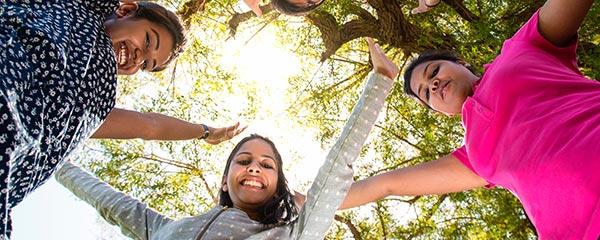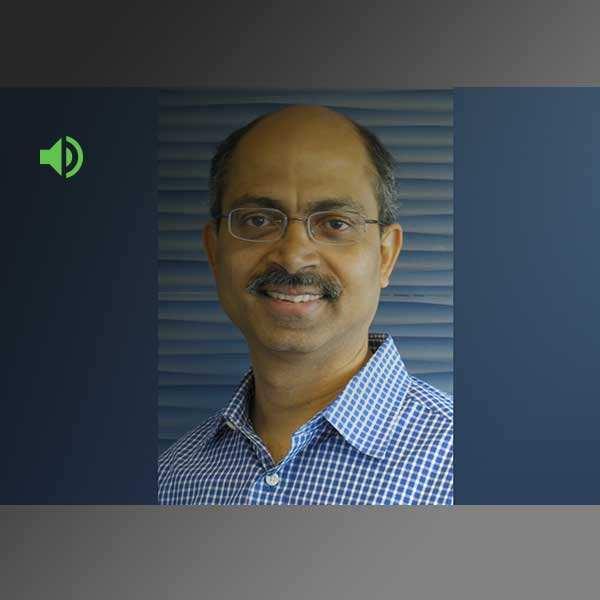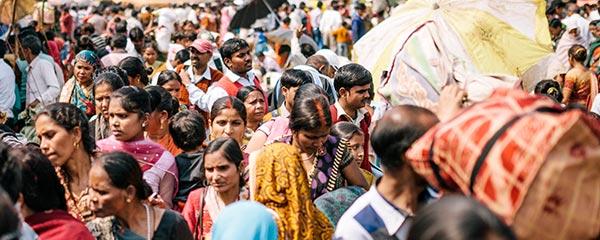Story Highlights
- 57% in India see living standards improving
- 43% struggle to afford food
- 31% are finding it “very difficult” to get by, triple the 12% in 2016
This is the second article in a three-part series on the opportunities and challenges facing India, which recently overtook China as the most populous country in the world.
WASHINGTON, D.C. -- India, home to over 1.4 billion people, has the world’s largest population but only its fifth-largest economy. However, Indians are more optimistic than people in most other bigger economies -- the U.S., Germany, Japan -- are about their economic prospects.
Still, the Indian economy is not immune from brisk global headwinds that are affecting all levels of society. Over four in 10 Indians -- or more than half a billion people -- are struggling to afford food, and almost as many are having trouble affording shelter.
Quick Summary: India’s economy is the fastest growing in the world, fueled by high public spending, strong urban demand and foreign investment. Given its high projected growth trajectory, the Indian economy is on track to surpass those of Japan and Germany to become the world’s third-largest by the end of the decade.
Since 1970, India’s gross domestic product per capita has expanded rapidly, lifting millions out of poverty and driving progress on life expectancy and infant mortality rates. A recent United Nations report estimated that between 2005/6 and 2019/21, roughly 415 million people in India were lifted out of poverty. This economic growth has been defined by large shifts in the structure of the economy: away from low-productivity agriculture toward the expanding industrial and service sectors.
Recent decades have also seen a growing aspirational consumer class, with household consumption accounting for the lion’s share of India’s GDP. But many economists have viewed the Indian economy through the lens of untapped potential. India’s population accounts for over 17% of the world’s population but produces only 7% of the world’s economic output.
Economic Optimism on the Rise: Despite the shocks of COVID-19 and the war in Ukraine, India’s economy has managed to weather the worst effects better than most. In 2022, 57% felt that their living standards were getting better.
Even though the richest 20% of Indians were more positive about their standards of living than the poorest 20% in 2022 (72% versus 44%, respectively, said they were getting better), the perceptions of the poorest 20% have nevertheless been improving almost every year since 2016. Rural areas were notably more optimistic than cities or towns about their improving living standards (65% getting better, versus 51% and 59%, respectively).
Perceptions of the local economy are also improving. Last year, 59% of Indians felt their local economic conditions were getting better, rather than worse (33%).
Across both measures -- living standards and economic conditions -- there has been a sharp drop in the proportion of Indians who feel things are staying the same. Most people feel like economic circumstances have been changing in decisive ways, largely for the better.
Improving economic perceptions have been buttressed by rising faith in financial institutions, which hit 90% for the first time last year.
Economic Challenges Remain for All: Despite the widespread perception in India that the economy is improving, life remains tough for millions today. More than two in five people (43%) in 2022 said they struggled to afford food at times in the past 12 months, a fall from recent years but still high compared with the long-term trend.
Inability to afford shelter tells a similar story, with 38% of Indians unable at times to afford it. In total, 26% of Indian adults -- roughly 270 million people -- struggled at times to afford both essentials of food and shelter.
The inability to afford the basics affects everyone, not just the poorest. The proportion of Indians who are finding it “very difficult” on their present household incomes reached 31% during the past two years, almost tripling since 2016 (12%). But recently, all income groups have been feeling the pinch. While people in the poorest income group are the most likely to find life very difficult on their income, 15% of the richest 20% still find life very difficult on their present incomes, a record high.
Bottom Line
India’s fast-growing economy is mirrored by the optimism of its people. But while there is optimism for the future, millions still struggle today. Rich and poor alike are finding it harder to get by on their incomes than in previous years.
As the economy continues to grow in the next decade and overtakes those of Germany and Japan, sharing the fruits of this growth among the country’s 1.4 billion people will be key if India is to live up to its economic potential.
Read Â鶹´«Ã½AV’s India Briefing (PDF download).
To stay up to date with the latest Â鶹´«Ã½AV News insights and updates, .
For complete methodology and specific survey dates, please review .
Learn more about how the works.




